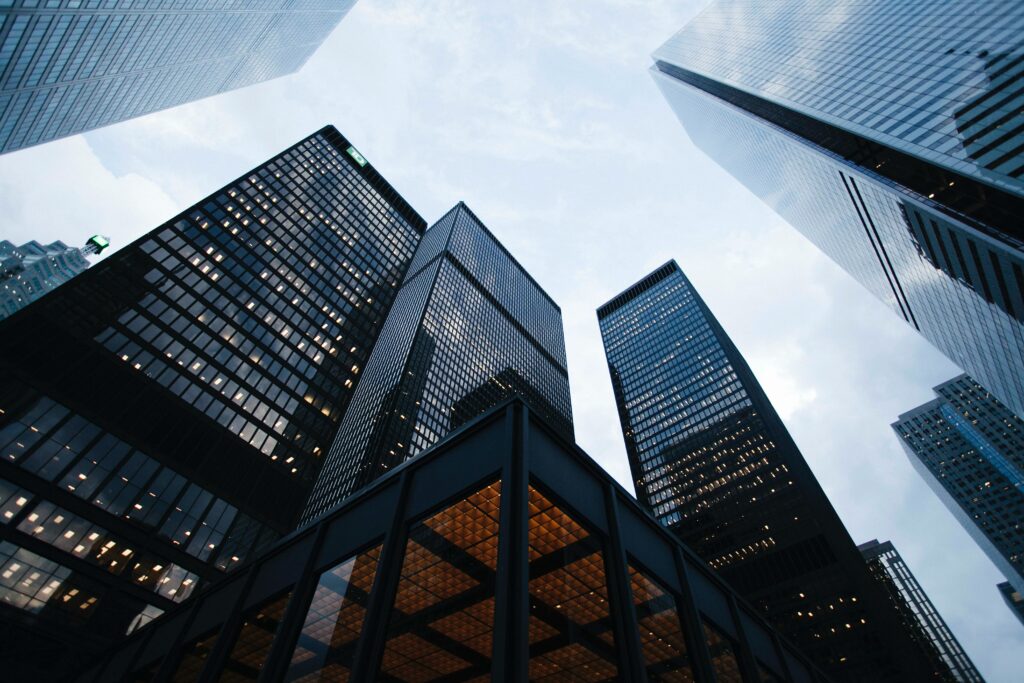Synthetic Biology: market drivers, challenges and R&D oppo...
Synthetic biology (or SynBio) is an exciting intersection of biology and engineering, which promi...

Capital allowances are a form of tax relief that allows businesses which pay tax in the UK to claim tax relief on qualifying capital expenditure they incur on assets such as buildings and equipment.
This means that businesses can deduct their qualifying cost from their profit, before calculating their tax liability.
Capital allowances is a financial benefit designed to incentivise businesses to invest in capital expenditure. Below are some key capital allowances changes in recent times which is meant to make the scheme even more lucrative for businesses.
AIA allows a full deduction up to a certain annual limit in respect of the costs incurred on certain qualifying capital assets in the form of plant and machinery, during the year the spend was incurred. On the 1 January 2019, the annual limit was temporarily increased to £1m for two years. Prior to the expiry of the two years on 31 December 2021, the Chancellor of the Exchequer, The RT Hon Rishi Sunak MP during the 2021 autumn budget extended the £1m to 31 March 2023.
The £1m extension is a welcomed change that will make investment in qualifying capital assets even more rewarding. It is therefore important that businesses are maximising the benefit before it is due to go back to £200k in 12 months.
The AIA annual limit has changed a number of times over the years as shown in the table below.
| AIA limit | Sole traders and partnerships | Limited companies |
|---|---|---|
| £1 million | 1 January 2022 – 31 March 2023 | 1 January 2022 – 31 March 2023 |
| £1 million | 1 January 2019 – 31 December 2021 | 1 January 2019 – 31 December 2021 |
| £200,000 | 1 January 2016 – 31 December 2018 | 1 January 2016 – 31 December 2018 |
| £500,000 | 6 April 2014 – 31 December 2015 | 1 April 2014 – 31 December 2015 |
| £250,000 | 1 January 2013 – 5 April 2014 | 1 January 2013 – 31 March 2014 |
| £25,000 | 6 April 2012 – 31 December 2012 | 1 April 2012 – 31 December 2012 |
| £100,000 | 6 April 2010 – 5 April 2012 | 1 April 2010 – 31 March 2012 |
| £50,000 | 6 April 2008 – 5 April 2010 | 1 April 2008 – 31 March 2010 |
The super-deduction scheme introduced in Finance Bill 2021 to amend Part 2 Capital Allowances Act 2001, is a two-year temporary first year allowances (FYA)[1] for certain qualifying capital assets in the form of plant and machinery. The scheme was announced on 03 March 2021 by the Chancellor of the Exchequer during the 2021 spring statement and is only available to businesses within the charge to corporation tax. The scheme took effect from 1 April 2021 and will cease to be available on 31 March 2023. It however excludes contracts/agreement for specific cost items entered into prior to the announcement on 03 March 2021.
Alongside the 130% super-deduction on main pool items, the government additionally allows 50% first-year deduction in respect of special rate pool items. This 50% deduction is therefore known as special rate (SR) allowances.
SBA was introduced on 29th October 2018 (operative date). It is available on structural and similar building related works like walls, floors and roofs, in respect of a non-residential business activity. It is similar to the industrial building allowances and hotel building allowances that have now being phased out.
SBA is only claimable at 3% straight-line deduction annually which will take about 33 years. The tax relief rate was 2% over 50 years until 31 March 2020 in respect of Corporation Tax and 5 April 2020 in respect of Income Tax. SBA is available where the construction work commenced (and its agreement entered into) on or after the operative date. Generally, except for land, the part of the asset or property that do not qualify for PMA may potentially qualify for SBA, assuming the operative date requirement above is met.
To be able to claim SBA on a qualifying second -hand building, the claimant would need to be in a possession of a compliant “Allowances Statement” obtained from the vendor of the building to confirm certain legislative basis of claim.
Enhanced Capital Allowances (ECA)
To incentive global trade with local economic prospects, ECA relief was introduced in Finance Act 2021 to provide 100% first-year allowances (FYA) to businesses investing in qualifying plant and machinery for use in freeport tax sites.
A freeport tax site is a designated area of land relating to a port within which certain tax reliefs are available for investment in that area.
This ECA is not available to businesses which are not within the charge to Corporation Tax. This ECA relief is not to be confused with another now repealed similar allowances with the same name. The old ECA was in respect of energy and water efficient assets. It was repealed with effect from 1 April 2020 in respect of Corporation Tax and 6 April 2020 in respect of Income Tax.
Some conditions for the qualifying plant and machinery expenditure to be eligible for the new ECA relief are as follows:
Enhanced SBA provide a tax relief of 10% deduction annually over 10 years for qualifying assets in designated Freeport sites in the UK:
The 10% relief is generous compared to the standard SBA rate of 3% annually. The conditions for qualifying enhanced SBA expenditure are as follows:
Ring fence trades include the business activities relating to the exploration and production of oil and gas in the UK and the UK Continental Shelf UKCS. The new measure introduced in Finance Act 2021 is a temporary change to allow 100% first-year allowances (FYA) to be claimed on expenditure qualifying for plant and machinery used partly in a ring fence trade in the oil and gas sector. Previously, full 100% FYA relief is available if the asset is used wholly for a ring-fence trade.
As the expenditure is for use partly for the purposes of a ring fence trade and partly for the purposes of another qualifying activity, a claim for FYA should be allocated between the ring-fence trade and the other qualifying activity on a just and reasonable basis.
The conditions for qualifying plant and machinery expenditure to be eligible for the new measure are as follows:
With some of the changes like the super-deduction ending in 12 months, it is expected that some may be extended or new replacement measures announced by the government in order to continue to make the capital allowances scheme even more lucrative.
If these new measures ending next year are not going to be extended, it would not be surprising to see that that government will introduce other measures that will be equally beneficial. This is very likely considering that the government is really keen to boost the economy through tax reforms that incentivise business investment. The Chancellor of the Exchequer during his recent Mais lecture[2] alluded to the fact that, when compared with other countries, the tax treatment allowable in the UK for capital assets such as those qualifying as plant and machinery is much less generous that the OECD (Organisation for Economic Co-operation and Development) average. As a result, the Chancellor hinted on prioritising cutting taxes on business investment. It would be interesting to see what other capital expenditure tax relief announcement would be featured in the upcoming 2022 spring statement.
Another new capital allowances measure that could be introduced by the government and well received by businesses, may relate to a robust replacement of the now repealed Enhanced Capital Allowances (ECA) scheme on energy and water efficient assets. This is on the premise of the government’s efforts towards environmentally friendly assets, and a green / sustainable future, in order to decarbonise all sectors of the UK economy[3]. This includes the government’s heat and buildings (net zero) strategy which includes commercial and industrial properties[4]. This ambitious net zero (emissions by 2050) strategy of the government, including setting out how the UK will unlock £90 billion in investment in 2030 is a good backdrop for a new energy incentive capital allowances scheme[5].
Our capital allowances team of qualified specialists with diverse experience and multidisciplinary construction and financial skills, leverage on their expertise to maximise cash saving benefits for businesses who incur capital expenditure.
We provide a whole development lifecycle capital allowances advice from planning to design, construction, occupation and subsequent disposal or sale. This includes property sale and purchase transaction advise to support either the vendor to retain their capital allowances, or for the buyer to benefit from capital allowances on the purchase price paid.
As shown below, our services include but are not limited to: Scoping exercise to explore what tax relief may be available to the business; due diligence to confirm scope and establish entitlement to claim; site visit to survey the assets where possible, in order to better understand their attributes such as construction technology and building engineering, as well as business use and function. We thereafter carry out a detailed analysis to identify qualifying expenditure and maximise the tax relief available. We subsequently prepare and issue our report to the business which can be filed with HMRC, along with the tax return in order to support the claim. We also go the extra mile in assisting the business with information in connection with the filing and any relevant post-filing requests.
Exploring availability of tax relief.
Confirming scope and establishing entitlement to claim.
Surveying the assets where necessary
Identifying qualifying expenditure
Preparing and issuing claim report
Assisting with filing and post-filing information
Are you planning to, or have you already incurred any commercial building or large-scale industrial and engineering plant related capital expenditure which may fall under any of the following categories?
[1] First-year allowances (FYA) allow a full deduction of the costs incurred on certain qualifying capital assets in the form of plant and machinery, during the (first) year the spend was incurred. Hence it is called “first year” allowances.
[2] https://www.gov.uk/government/speeches/chancellor-rishi-sunaks-mais-lecture-2022
[3] Net Zero Strategy: Build Back Greener, 2021; https://assets.publishing.service.gov.uk/government/uploads/system/uploads/attachment_data/file/1033990/net-zero-strategy-beis.pdf
[4] Heat and buildings Strategy, 2021; https://assets.publishing.service.gov.uk/government/uploads/system/uploads/attachment_data/file/1044598/6.7408_BEIS_Clean_Heat_Heat___Buildings_Strategy_Stage_2_v5_WEB.pdf
[5] https://www.gov.uk/government/news/uks-path-to-net-zero-set-out-in-landmark-strategy#:~:text=A%20landmark%20Net%20Zero%20Strategy,government%20today%20(19%20October).
Explore our latest insights

Synthetic biology (or SynBio) is an exciting intersection of biology and engineering, which promi...

Even in the best of circumstances, we know that it can be challenging to balance a successful car...

Small and Medium-sized enterprises (SMEs)are the lifeblood of innovation in the UK. We’ve dived i...

Full expensing is a first-year allowance that allows businesses to reduce their tax liability and...